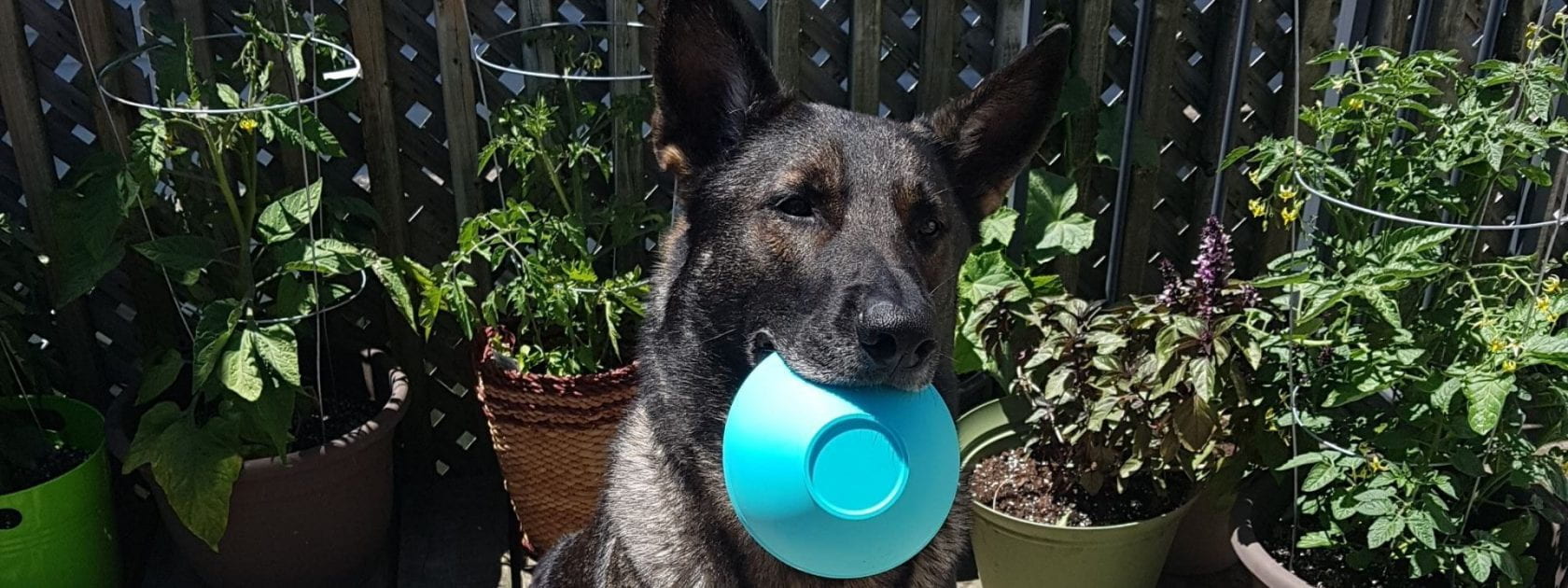The number of pet foods and treats available for our four-legged companions has grown ever larger in the past decade. For many pet parents, the variety of choices can be overwhelming, and they look to their family veterinarian for guidance. In the wake of recent announcements about US tariffs, Canadians have felt some social (or nationalistic) pressure to purchase Canadian made products. Both veterinary health care teams and pet owners have asked our Pet Nutrition Team at the Ontario Veterinary College (OVC) for help identifying Canadian made pet foods.
First it is important to understand two terms or phrases that can be found on a pet food label: ‘Made in Canada’ or ‘Product of Canada’.
In order for pet food manufacturers to put ‘Made in Canada’ on their labels, they must meet three conditions:
- The last stage of transformation of a product must take place in Canada. For example, assembling and cooking ingredients to create and packaging kibble pet food.
- At least 51% of the total direct costs to manufacture the product must take place in Canada.
- The ‘Made in Canada’ claim includes an appropriate qualifying statement, such as “Made in Canada with imported parts” or “Made in Canada with domestic and imported parts”.
In order for pet food companies to make the claim ‘Product of Canada’ on their labels, they must meet these two conditions:
- The last stage of transformation of a product must take place in Canada; and
- At least 98% of the total direct costs to produce or manufacture the product must happen in Canada. Low levels of ingredients generally not produced in Canada, such as oranges, vitamins, spices etc. may be included in the remaining 2%
These claims are regulated by the Competition Bureau who is responsible for the administration and enforcement of the Competition Act and the Consumer Packaging Act.
If a pet food company makes one of these two claims on a product and doesn’t follow the list of conditions stated above, they could face criminal charges and significant fines.

it’s not easy to find pet food options that are exclusive products of Canada, and in fact, there are no veterinary therapeutic diets that are exclusively Canadian made
The majority of pet owners likely don’t know that the pet food industry requires a lot of collaboration between Canada and the US in order to bring ingredients and materials together to complete the dog and cat foods and treats we see on the store shelves (or order online). There are companies that have production facilities in both countries and employ many Canadian and US citizens. There are also many Canadian farmers supplying ingredients to both Canadian and US pet food companies.
Here are some examples to consider:
- A Canadian-based manufacturer of super premium pet foods is now owned by an American firm. With production facilities in Canada and outside of Canada, this manufacturer is contributing to local economies at home and other parts of the world.
- A pet food company founded in Europe is now owned by an American company with a production facility in Canada that employs hundreds of workers, and many of the ingredients used are sourced from local farmers, too. Pet food products made at this facility go to markets in Canada, the US, but also Asia and South America. We live in a global economy!
- An American pet food company with production facilities across the globe has an integrated supply chain that sources packaging materials and ingredients, such as grains, peas, and nutritional mixes, from Canada. This supply chain directly supports many of our Canadian farmers. Moreover, this company has a team of Canadian employees that directly serve Canadian pet owners and veterinary health care teams.
For many pet owners and veterinary health care teams the decision to support ‘Canadian-made’ pet foods will be straightforward – they can look for one of two claims on the pet food and treat packages. If they find a claim that says, ‘Made in Canada’ or ‘Product of Canada’, they can be confident they are supporting (directly or indirectly) Canadian farmers and employees at Canadian-based production facilities.
What if you don’t see a ‘Made in Canada’ claim on the label? The package should still mention the manufacturer’s name and location. Though this may be in small print, it is a legal requirement according to the Consumer Packing Act.
You can also call the company and ask what materials and ingredients they source from Canada and if they employ people in Canada. Since focusing on Canadian-made products is important to many pet owners right now, it could be helpful to understand how our current pet food purchases are supporting fellow Canadians.
Other questions pet owners might ask themselves:
- How is my pet doing on their food right now?
- Would they accept a food change?
- Is their current diet helping to manage one or more medical issues?
We each have access to a lot of information about pet health and nutrition on the Internet, some of which is inaccurate or misleading. For this reason, the OVC Pet Nutrition Team encourages pet owners everywhere to have regular nutrition conversations with their veterinary health care team. Talking about concerns and evaluating diet options is an important process to understanding what is best for each individual pet.
Written by:
Becky Hunt, RVT, VTS-Nutrition, Hill’s Pet Nutrition Registered Veterinary Technician
Dr. Sarah K. Abood, DVM, PhD, Associate Professor, Nestlé Purina Professorship in Companion Animal Nutrition
Reviewed by:
Dr. Adronie Verbrugghe DVM, PhD, EBVS® European Specialist in Veterinary and Comparative Nutrition (Dip ECVCN), Associate Professor and Royal Canin Veterinary Diets Endowed Chair in Canine and Feline Clinical Nutrition


